Miniature roses can liven up your space, and you don’t have to sacrifice a big, bold display for a petite footprint.
Though these plants are physically diminutive, they are mighty in their impact. And that’s doubly true when you grow them in pots.
A pretty container in a prominent spot only serves to emphasize how attractive mini roses can be.
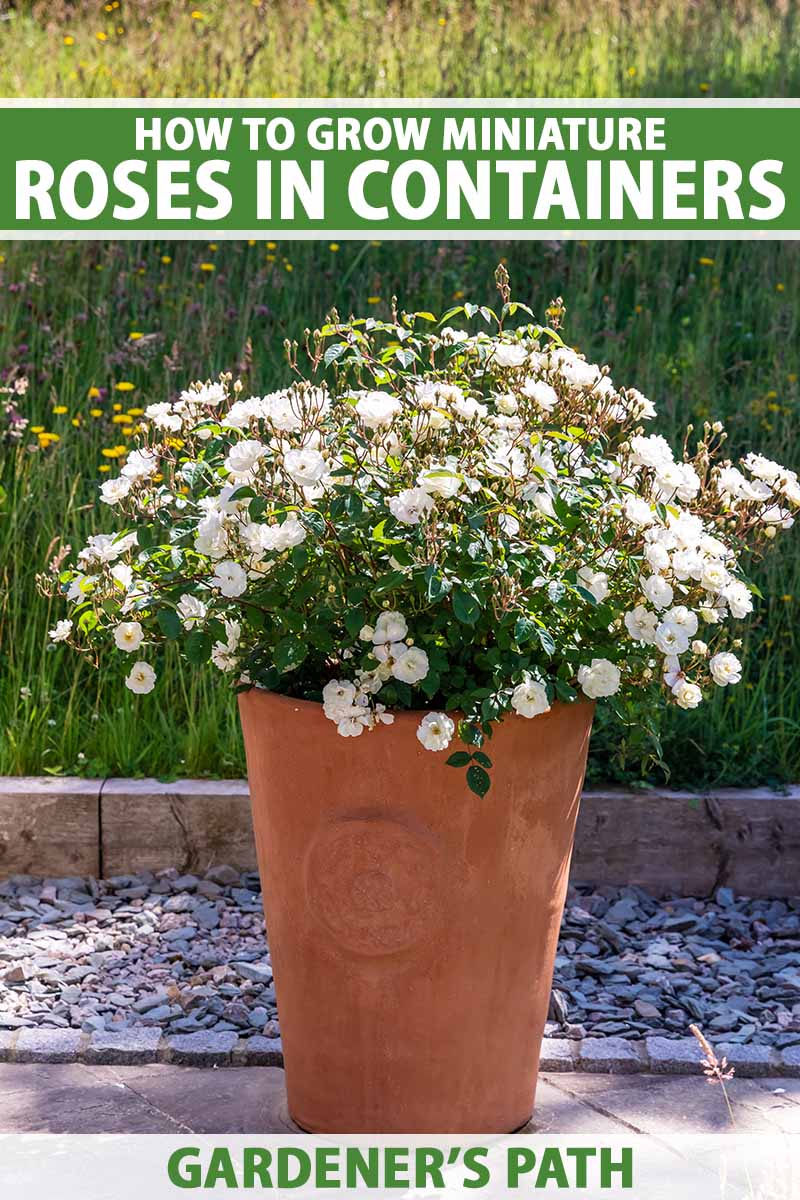
We link to vendors to help you find relevant products. If you buy from one of our links, we may earn a commission.
From the micro-minis that stay under six inches tall to the bigger options that top out at under three feet, minis put on a macro display.
Making them sing takes minimal effort, providing maximum bang for your buck for a tiny investment in terms of time and resources.
To help you make the most of your teacup roses, we’re going to discuss the following:
What You’ll Learn
Miniature roses are bred to stay petite and most of them have proportionally small flowers. Some, however, do produce flowers that are the same size as those you might see on a full-sized plant.
Most minis are hybrid teas, but not all of them. Not sure what a hybrid tea is? Read our guide to rose types for more info.
You will often see miniature roses sold in containers at floral gift shops, and much of the time, these are tossed out after the blooms have faded. But you don’t need to throw them away.
Keep growing them in a container and you’ll enjoy year after year of color with the proper care.
Pick the Right Container
You aren’t really limited in the type of container that you can use.
Metal, plastic, wood, ceramic, stone, and terra cotta are all perfectly fine. However, you can make your life a little easier if you consider your climate and the level of effort that you want to expend.
If you live somewhere that heats up to oven temperatures in the summer, avoid materials that hold heat like metal. You might even want to put your container inside a second, larger container to provide some insulation.
The opposite is true if you live somewhere that’s particularly chilly for most of the year. A metal or stone pot can help the soil retain some heat.

If you live in an area that has cold winters, a double-insulated pot or a pot placed inside another pot are good options.
Plastic tends to hold water the best, and unglazed terra cotta hardly at all. Stone and other types of ceramic tend to be right in between, depending on whether the container’s sealed and glazed or not.
Regardless of the material, choose a vessel that is at least 10 inches wide and deep. You can start with something smaller if your plant is very young, but you’ll need to upgrade pretty quickly.
Finally, the pot needs to have good drainage. Roses will die pretty quickly if they have consistently wet feet. If you double up with an external cachepot, be sure that at least the inner one has drainage holes.
Creating Good Soil
While an all-purpose potting soil will probably do the job, you can mix something up that’s tailor-made for your plants.
When I plant miniature roses in containers, I start with a water-retentive potting soil such as FoxFarm Ocean Forest Potting Soil Mix, which is my personal go-to.

Amazon carries this light and well-draining soil, with the right pH for these plants, in one-and-a-half-cubic-foot bags.
To this, I mix in something to improve the drainage and water retention even more. I like to use rice hulls, since they’re environmentally-friendly – not to mention affordable. Add one part rice hulls to five parts soil.
If you don’t already have rice hulls in your gardening toolkit, you should add some. They’re extremely handy to have around.
Arbico Organics has quarter-, half-, and one-cubic-foot bags available.
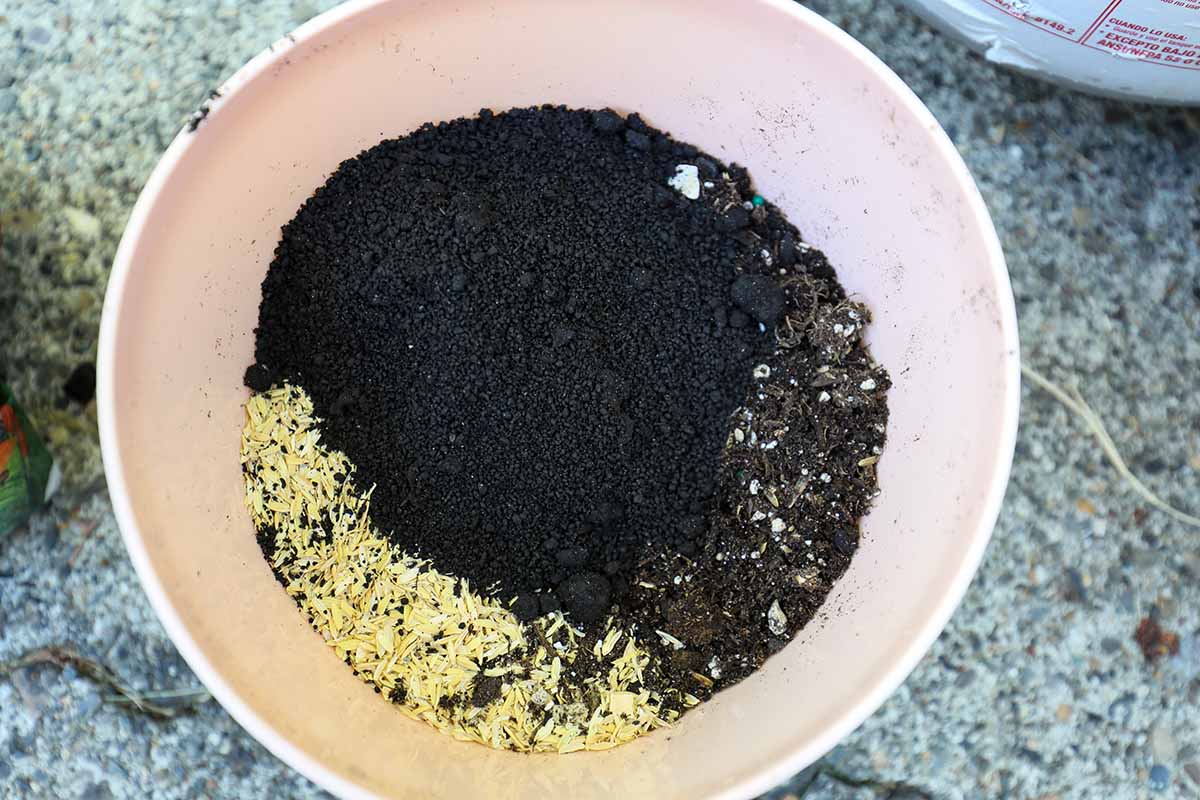
Finally, I toss in one part worm castings for a little extra nutrition. If you add worm castings in the beginning when you’re planting, you won’t need to fertilize until the following year.
Planting
Once you have your soil sorted out, put a layer in the bottom of the container so the plant will sit at the same height as it was in the original container.
If there is a graft union (the little joint where the root stock joins the branch stock), it should be slightly above the soil. Make a little raised cone in the center of the soil.
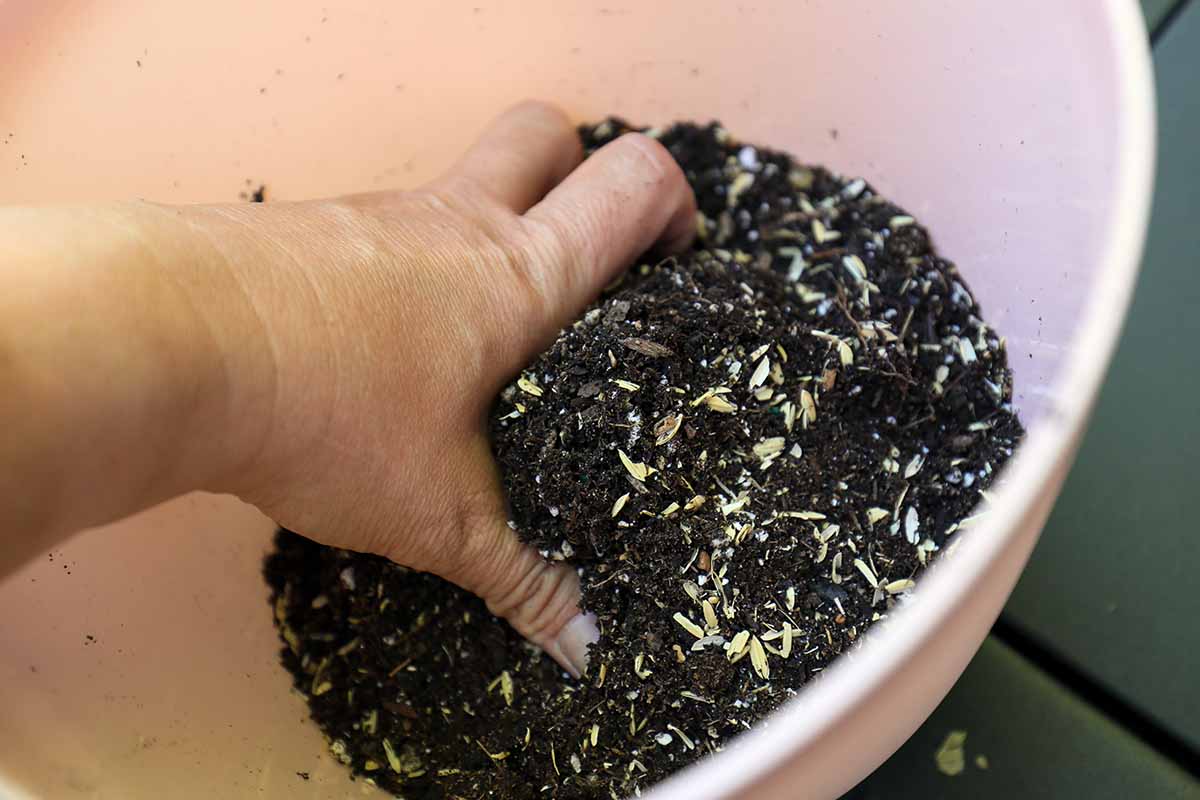
Remove the rose from its container and brush away as much of the soil as you can. Spread the roots out and lower them over the cone that you made.
Now, fill in with more soil so that the plant is held firmly in place.
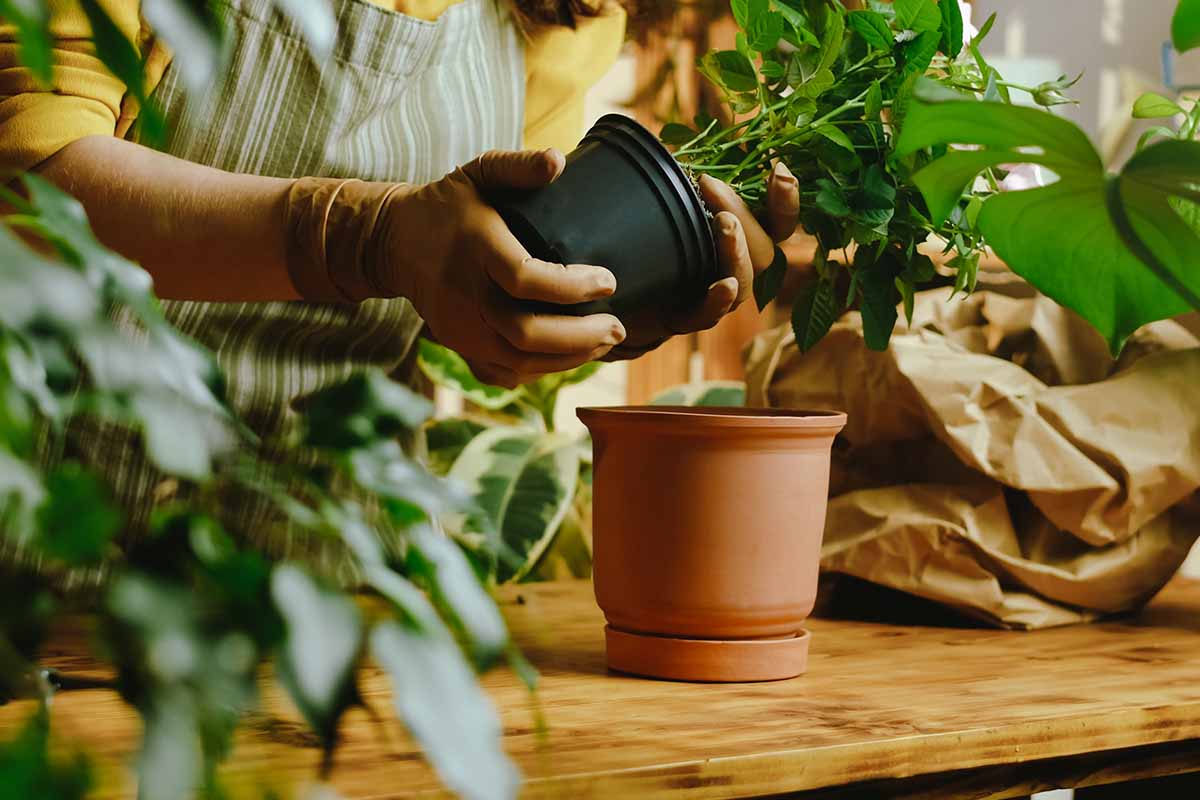
Add some water to the container to settle the soil and top off with a bit more soil if needed.
Caring for Miniature Potted Plants
You have to be more diligent in general about watering plants that are grown in containers. Moisture tends to evaporate more quickly in containers than it does from soil in the ground.
It’s pretty simple to figure out when you need to add water. Just stick your finger into the soil. If it feels dry to your second knuckle, add more.
Self-watering pots or watering bulbs take the guesswork out of things.
These extra-long bulbs by Evelots that are available from Amazon work well for larger containers. Drip irrigation can also help you keep things more consistent.

Where you put your pot also matters. It’s tempting to keep miniature roses indoors and they’re often given as houseplant gifts, but they won’t do well inside for long. If you want to keep them in a window for a month or so, feel free.
But then bring it outside to a sunny spot when the weather is warm.
When you bring your plant outside, transition it slowly over a week or so. Let it have an hour of sun outdoors on the first day before bringing it back inside, and then add an additional hour each day after that.
Most minis do well in full to partial sunlight. Anything less and you’re asking for fungal diseases and a reduced display of blossoms.
If you live in a cooler region, consider placing your containers near a brick or cement wall. The reflected heat will keep them warm. On the other hand, if you live somewhere that gets hot during the summer, keep your plants away from brick walls.
Also, be aware of where your glass reflects. I once created a beautiful little display of potted miniature roses in varying container heights on my patio, only to discover after a few days that the windows of my garage reflected back onto the plants during the afternoon. It toasted them up as surely as it would if I had put them in the oven.
You also have to be more careful about fertilizing potted miniature roses. Nutrients tend to leach out of the soil each time you water, but you also have to be mindful not to over-fertilize.
Assuming you used a standard potting mix with no added fertilizers, you don’t need to add more food until the plant has stopped blooming. At that point, top it up with a granular slow-release fertilizer. Liquid leaches out too quickly.
The next year, add more fertilizer in the late winter so it’s available to your roses when they start to emerge. Fertilize again after the first flush of blossoms, and again – using half as much – after the next flush.
Reduce by half again for each successive flush. Fertilize one last time about six weeks before the first projected frost date and then no more for the rest of the year.
Choose a fertilizer formulated for flowers, or even better, one that’s specifically intended for use on roses. Down to Earth’s Rose & Flower Mix has never let me down.
Down to Earth Rose & Flower Mix
It’s available at Arbico Organics in one, five, and 15-pound containers.
Pruning is no different than what you would do for a full-sized shrub growing in the ground. Read our comprehensive guide that walks you through the process.
Every three or four years, you’re going to have to totally repot your plant. But it’s not just a matter of upgrading the container size. You need to replenish the soil, which will become compacted, hydrophobic, or simply depleted over time.
To repot, remove the plant from the soil and knock away as much of the dirt as possible.
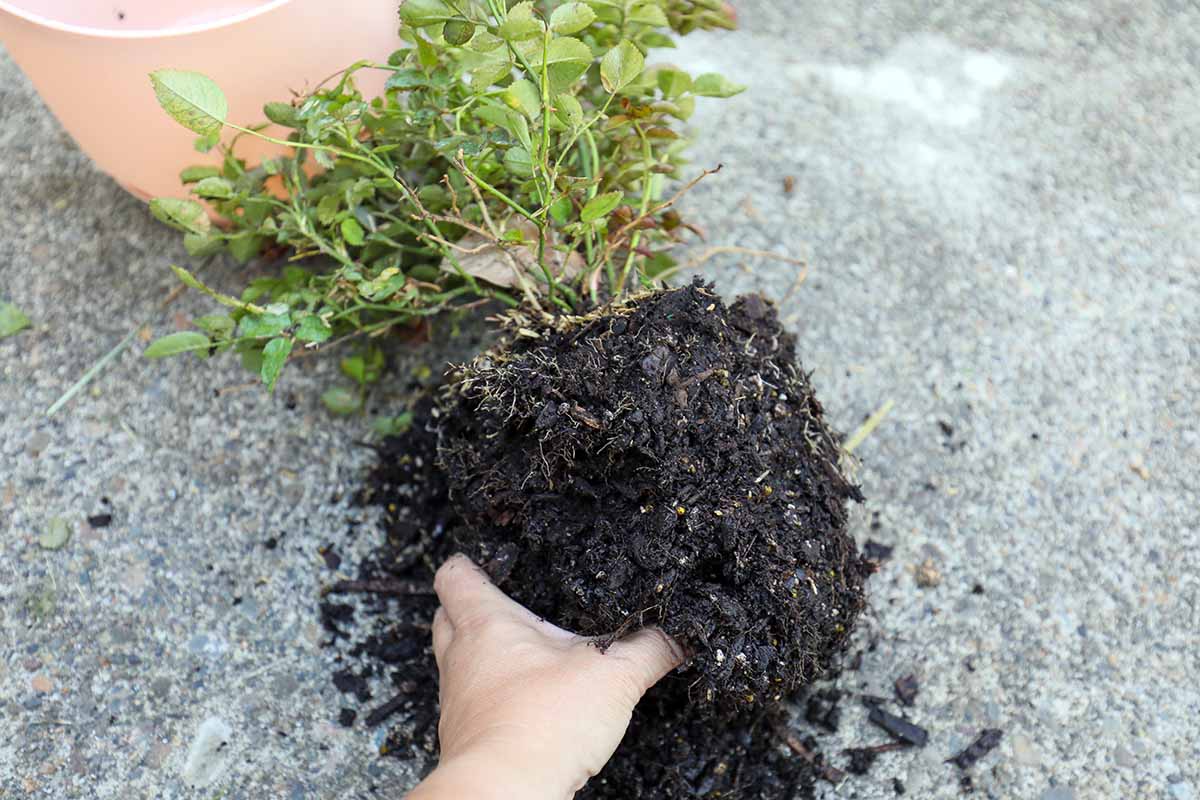
Then, repot in the same size or one size larger container using the instructions for planting as described above. Make sure to use fresh soil, not the old stuff.
Winterizing
Because miniature roses are usually planted in small containers, they’re more susceptible to the changes in temperature from summer to winter than plants grown in the ground or in larger pots.
You should act as though your plants are in a growing zone below where you actually live to account for this.
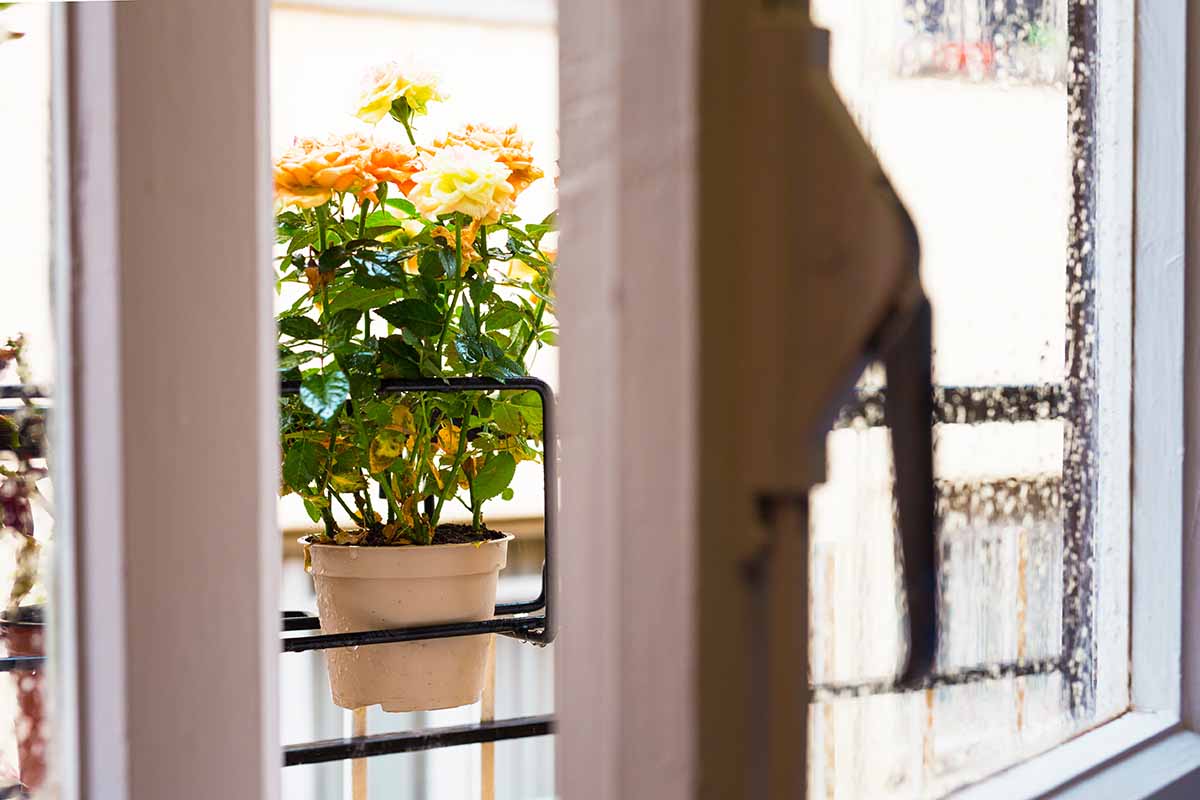
For instance, if you live in USDA Hardiness Zone 7, treat your plant as if you are in Zone 6. That means you might need to provide winter protection.
The easiest way to do this is to move the pot into a garage or onto a patio next to the house during the winter. Or, even better, you can shove the pot up against a nice, warm brick or cement south-facing wall during the winter.
Otherwise, you don’t need to do anything exceptional to keep your petite pretties happy over the winter. Read our guide for more tips on how to make roses happy even during those cold dormant months.
Companion Plants
A single specimen in a container is perfectly wonderful, but a grouping of compatible species can be divine.
As much as I love roses, I have to admit that I don’t find them particularly attractive when they aren’t blooming. So including something that takes up the slack when your roses are napping is an excellent idea.
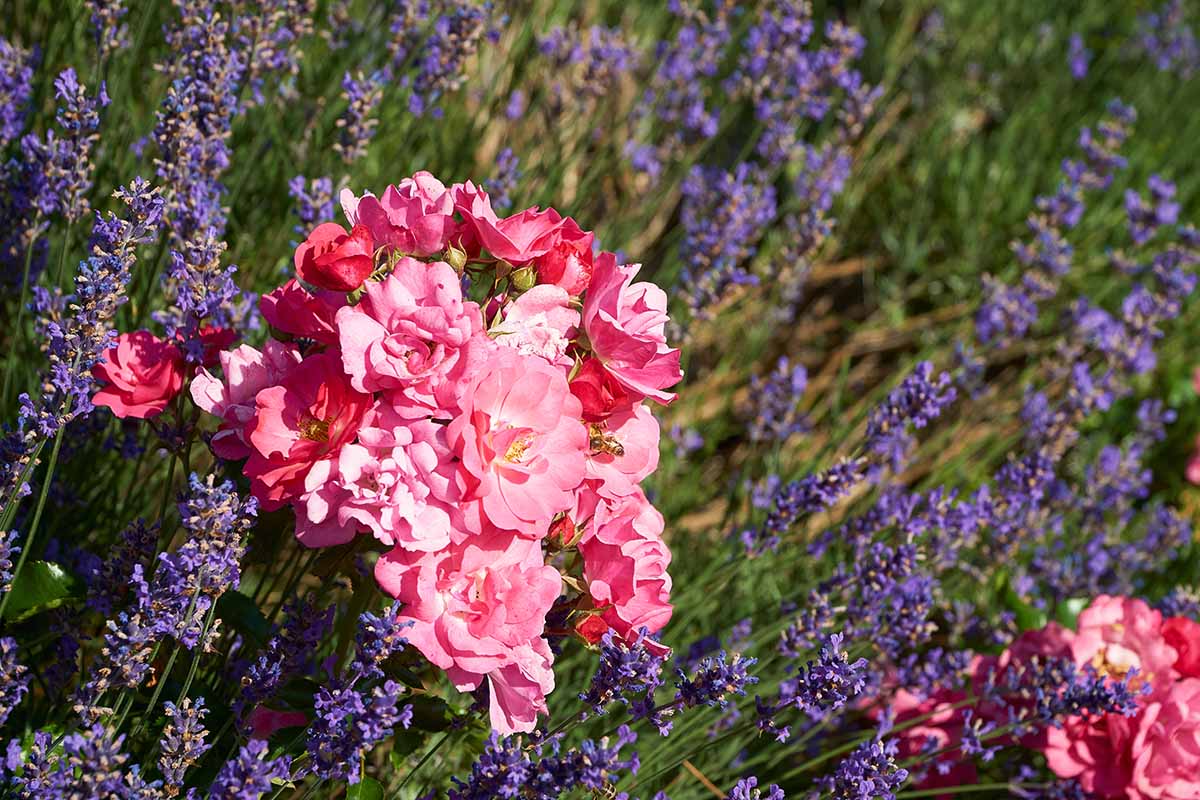
Just make sure whatever you plant has similar growing requirements.
Lavender works well, though it often blooms at the same time as many roses, so check on your particular cultivar. Dianthus is a good option, and both roses and dianthus are edible, so you can have a little floral food garden.
Also try petunias, geraniums, phlox, alyssum, creeping thyme, and snapdragons. Just be sure to size up your container accordingly.
Managing Pests and Disease
Any of the pest infestations and diseases that full-sized specimens or those growing in the ground are prone to can affect potted miniature ones as well.
However, they are more susceptible to fungal diseases simply because they tend to be more cramped for space, and they’re often placed in less sun than is ideal.
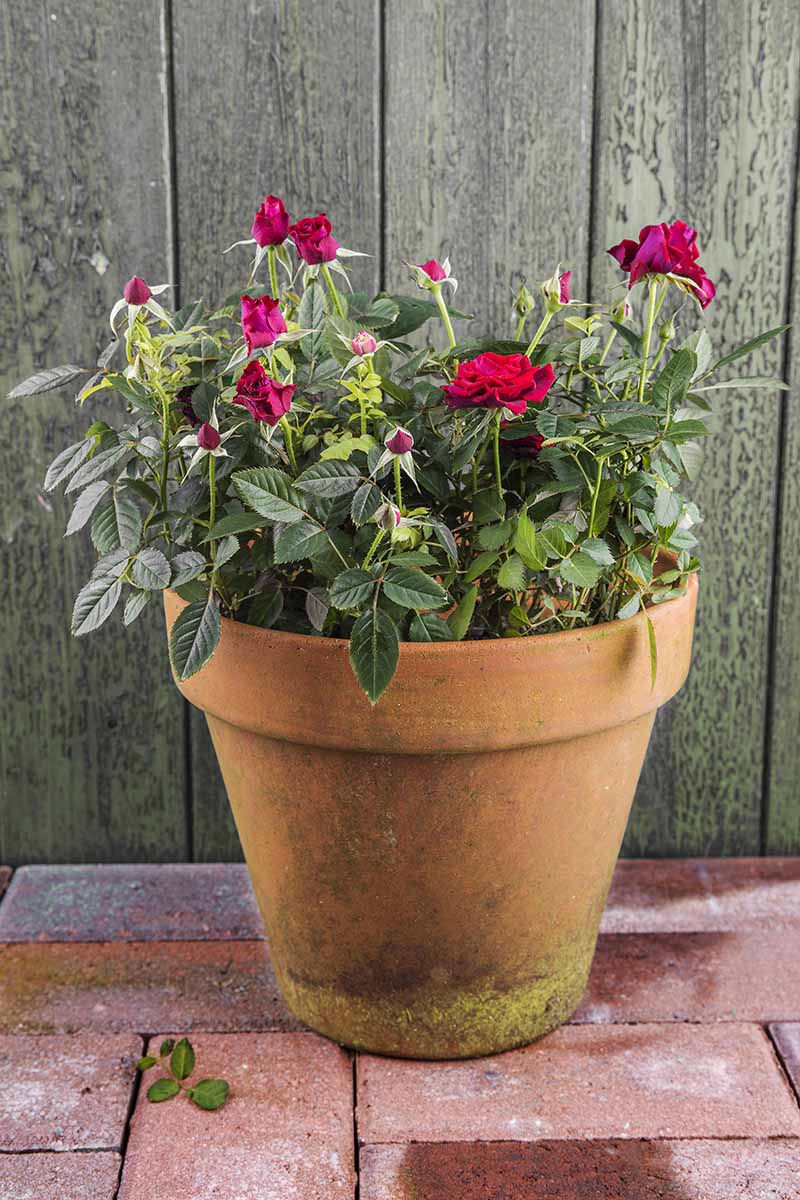
I mention this so you can keep a diligent eye out for those myriad fungal diseases that seem to hunt for a susceptible rose to attack at every opportunity.
Spider mite infestations are also a common problem with container plants specifically.
Best Hybrids and Cultivars to Select
Any miniature rose is going to be perfectly happy growing in a container, assuming you give it the conditions described above. We have a guide to some of the best ones out there today, if you’re looking for options.
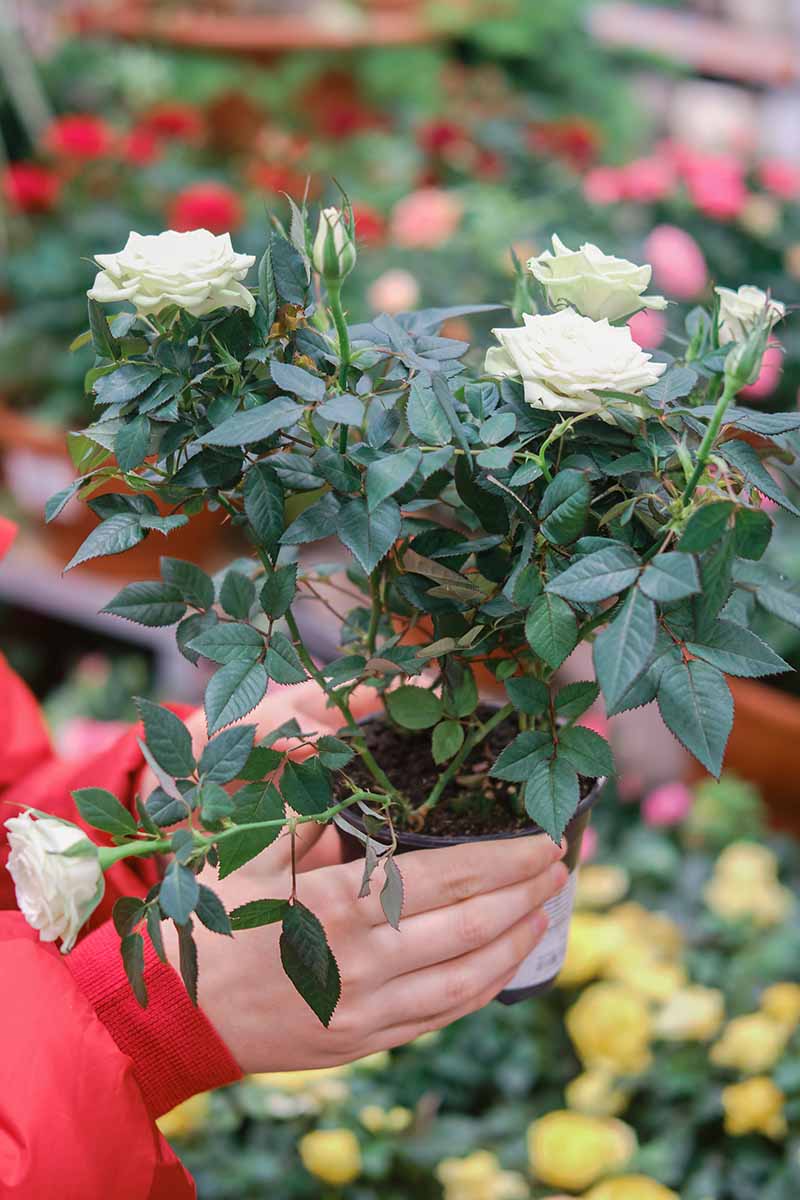
However, there are a few that are particularly carefree when it comes to raising miniature potted container roses, thanks to disease resistance and a compact growth habit.
Look to ‘Autumn Splendor’ ‘Be My Baby,’ ‘Coffee Bean,’ ‘Ivory Palace,’ ‘Salute,’ ‘Winter Magic,’ or any of the Sunblaze or Knock Out brand minis.
Good Things Come in Small Packages
There’s something to be said for a small but mighty display. A massive rose is nice and all, but bigger isn’t necessarily better.
Miniature roses, especially when they’re grown in containers, offer up impressive impact without taking up a large amount of space.

Which cultivar will you choose? Where will you keep your new beauty? Let us know in the comments!
Interested in growing your Rosa garden even larger? We’ve got you. These guides will turn you into a rose expert in no time:
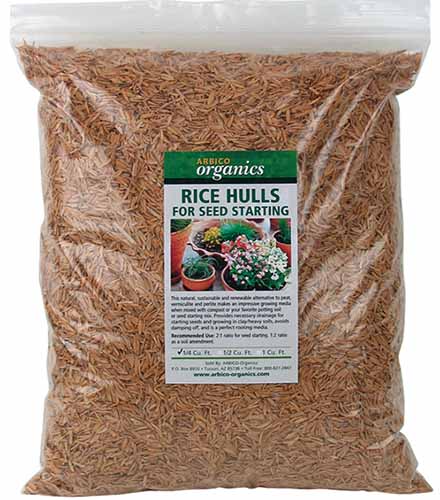
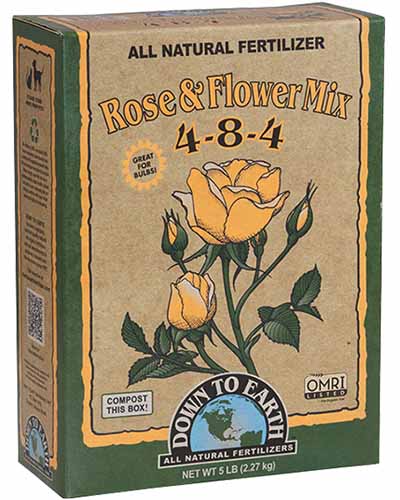
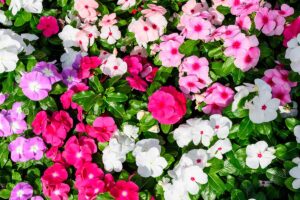

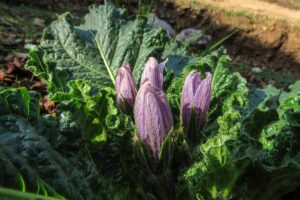
Bought mini roses from Checkers in Pinetown KZN. They had flowers and are self watering, but àfter a week the leaves started to fall off and plant started to die. How can I save them and keep them growing. Soil is moist and they are inside the house in good light like they were in Checkers. I have 3 and all the same.
Hi John, it could be caused by many things, but my first thought is overwatering. If you touch the top of the soil and it feels moist, you need to let the pots dry out a bit before watering again. Depending on the size of the plant, the soil should be dry to your first or second knuckle before you add water. And by moist, it should feel like a well-wrung-out sponge. Not like a sponge that hasn’t been wrung out thoroughly. Few things can kill a potted rose faster than wet roots. If you suspect they’ve been overwatered, remove… Read more »
John, mini roses grow best outdoors. I experienced similar problems with an indoor mini rose. It lived for a couple months, then dropped its leaves and died. A fellow gardener informed me that mini roses require full-ish sun. I bought another and placed it on my east-facing balcony, and it thrives beautifully. I recommend moving your lot outdoors to a mostly sunny spot, if possible. If the leaves sun scorch, move them to partial shade. Water a couple times per week, and fingers crossed, you see improvement.